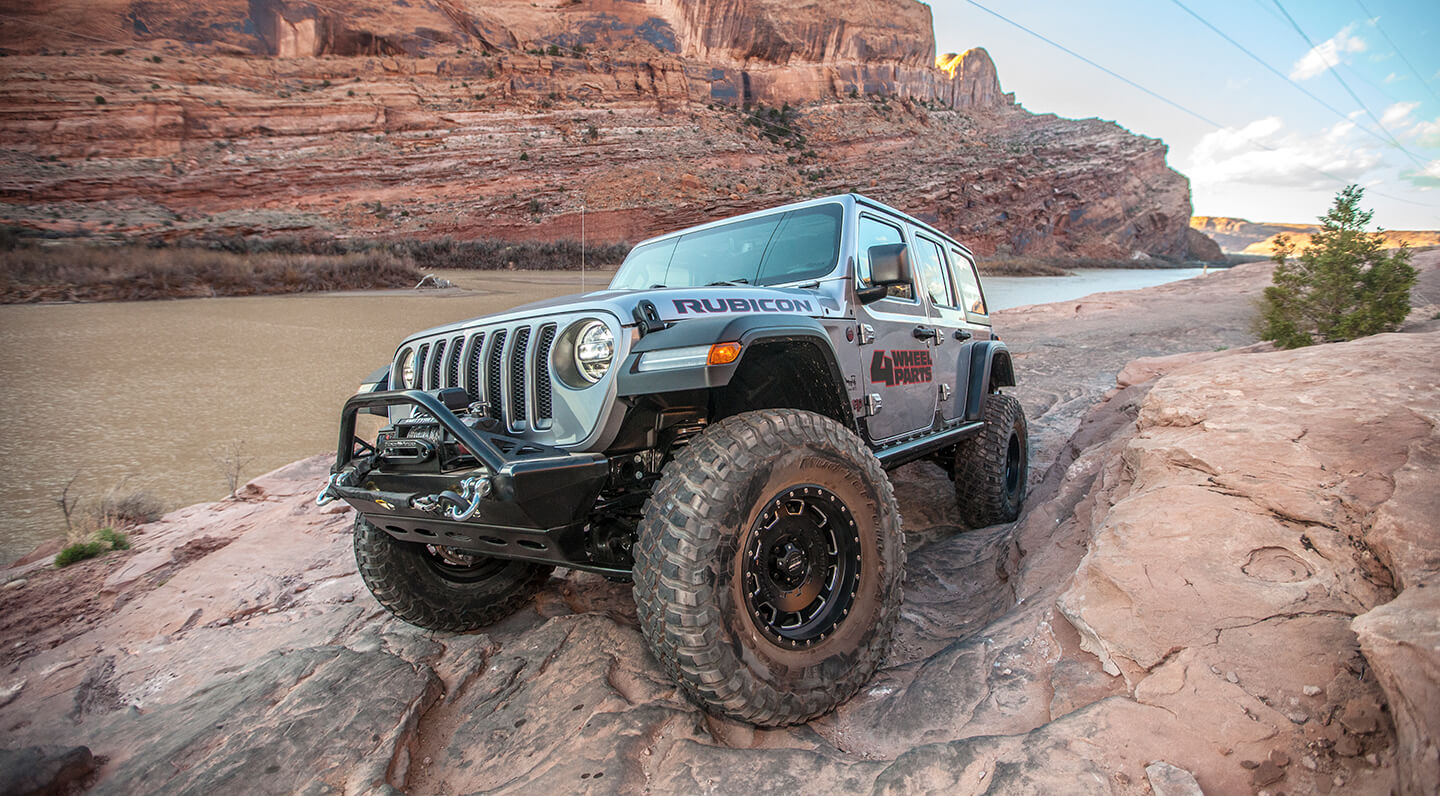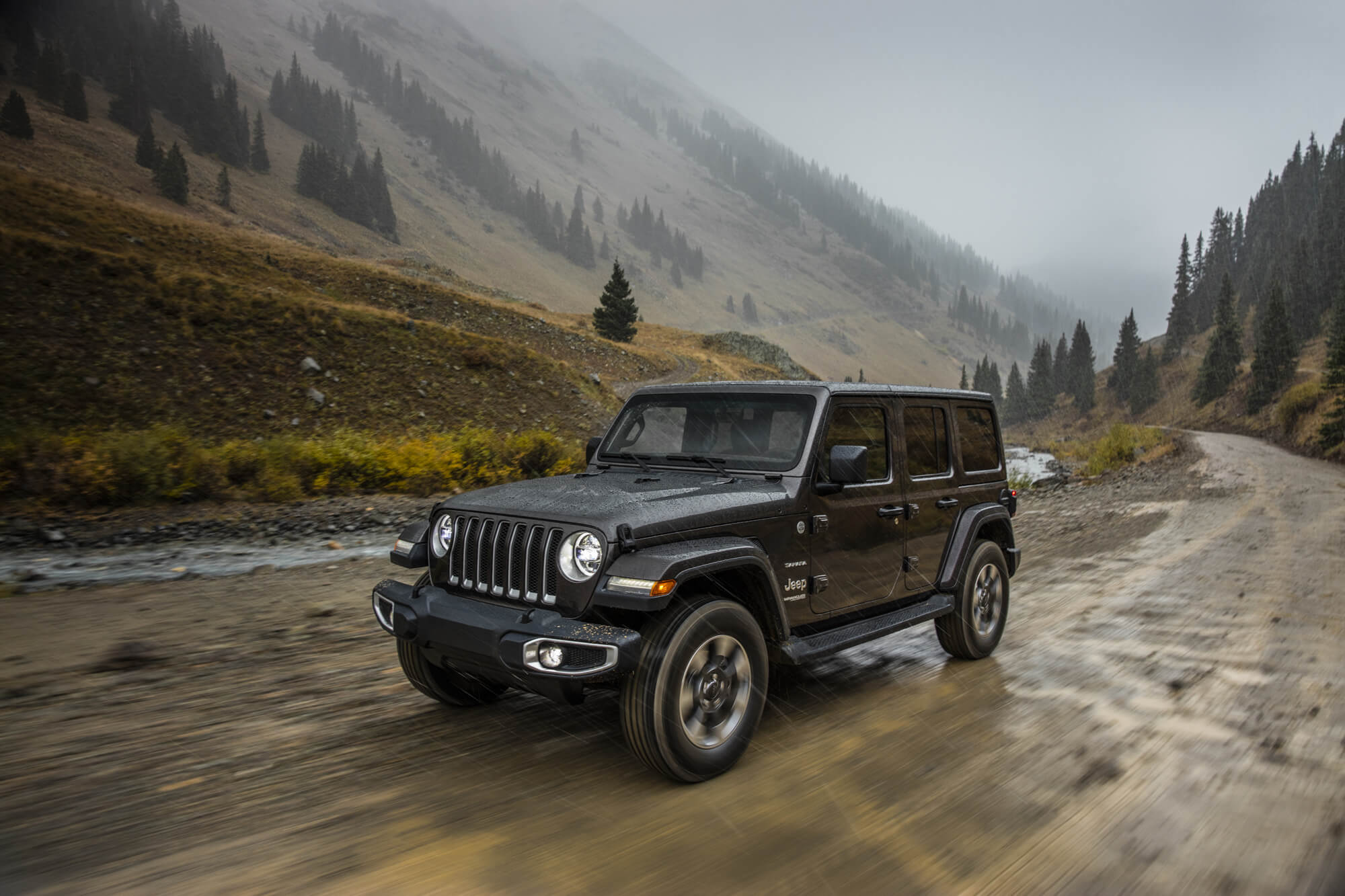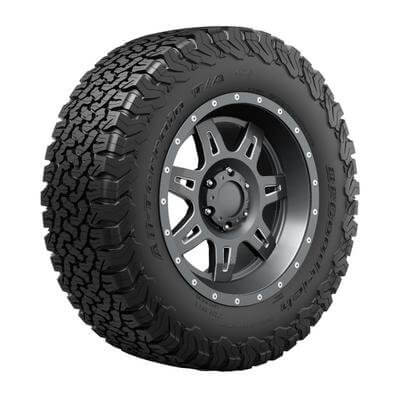
Congratulations! If you are reading this article chances are that you have a shiny new Jeep Wrangler JL sitting in your drive. Or, maybe you are like us and are just dreaming of getting one. Either way, the Jeep JL is a solid choice for anyone looking to hit the dirt. Like its predecessor, the JK, the JL has almost perfect dimensions for the trail and a constantly growing amount of aftermarket support. Unlike the JK, the JL is also a comfortable place to rack up highway miles and has an interior that looks like it was designed in this century. It is a very versatile vehicle that can be built to take on tough terrain and drive back in on the road in total comfort.
Many new Jeep JL owners are surprised by the relative lack of capability in bone stock form. This is especially true of the non-Rubicon models like the Sport, Sahara, and all the other models. While the Rubicon is one of the most capable off-road vehicles you can buy straight from the factory, the harsh reality is the others are not. Yes, they are Jeeps and way more capable in stock form than most other vehicles, but they are going to need some love to be fully ready for the trial.
Thankfully, there is no need to worry as there are plenty of parts out there to expand the capabilities of your Jeep JL. While the aftermarket isn’t as vast yet as the JK, it is rapidly growing. And, if you are confused about what route to take or what parts you need, we are here to help. What follows is what modifications we would make if it was our JL and in what order.
There are a few things to remember before proceeding. First, this list is for the non-Rubicon models only. The Rubicon will have many of these enhancements straight from the factory. Also, before you get triggered, we are not saying that your Wrangler JL is useless off-road in stock form. It is not, so go wheel it and enjoy. These modifications will significantly expand its capabilities and make it even more fun. And remember, you can do all of these as your budget allows so little Jimmy can still go to college. Okay, enough said. Let’s get on with it. Here is our list of the first modifications we would perform to the Jeep JL.

While the Jeep Wrangler Rubicon is one of the most capable off-road vehicles you can buy, all the other models are less so. They will need some modifications before taking on tougher terrain.
Better Tires
Jeep JL Rubicons come with BFGoodrich’s excellent KO2 all-terrain tire. Non-Rubicon models come with a bit of a hodgepodge of tires from a variety of manufacturers. Some are very highway-biased tires while others are more mild all-terrains. What tire you get depends upon trim level, if you have a limited slip, wheel options and other factors. We would be hesitant to venture onto a trail with highway tires as they really don’t offer much traction in the dirt. The less aggressive all-terrains that come from the factory on the Jeep JL will fare better in the dirt, but will still be best for mild wheeling.
If you are planning on hitting the trails, we would be looking for a more aggressive all-terrain or mud-terrain tire with better puncture resistance. There are a ton of tire options out there and more than likely it will come down to whether you want an all-terrain or mud-terrain tire. That can be a very heated debate with a ton of opinions on both sides. Our suggestion is to run a more aggressive all-terrain tire if you want to run trails, spend plenty of time on the highway, won’t see much mud and need more grip on snowy roads. If you will encounter mud and spend time on rockier, more technical trails, then a mud-terrain is a solid choice. Of course, what size tire you can fit depends upon what suspension you run so read on.
More Altitude
Much has been made of the ability of the new Jeep JL to fit bigger tires without much lift. We have seen videos on YouTube of people stuffing 35-inch tires under Jeep JLs and 37-inch tires under Rubicons without any lift. While that might be great for social media, we have found the reality to be much different. Initially, on our JL Rubicon, we started with a 2-inch spacer lift, stock shocks, and 37-inch tires. For the technical, rocky and harder trails we tend to do we found the Jeep was way too low. We were constantly getting into the rockers and dragging the belly. We eventually went with a 3.5-inch lift, kept the 37-inch tires and were much happier. Remember, this is on a Rubicon with its taller, higher-clearance fenders.
So what would we recommend for non-Rubicon JLs? Well, that depends on how you are going to use your vehicle. If you are more the type that likes to do some exploring down dirt roads along with some more mild trails, a lift around 2-inches should be fine. If you plan to take on more technical, harder trails we would actually go with a 3.5-inch lift. Both lifts can clear 35-inch tires, but we would probably run a 34-inch tire with a 2-inch lift just to be completely rub free. We wouldn’t want to run a tire larger than 35 inches on the stock Dana 30 front axle so keep that in mind.


Better Shocks
Bigger lift kits will require new shocks, while some of the smaller leveling kits allow keeping the factory shocks. Even if we weren’t lifting our JL at all, we would replace the OEM shocks. They are on the soft side and are more geared for providing a nice, comfortable ride on the highway. In rough terrain at anything above a crawling pace, they tend to lack control and blow through the suspension travel.
Many lift kits come with basic shocks with an option to upgrade to better shocks. We would always take the upgrade as the right set of shocks play a vital role in how well your suspension works. Look for bigger shock bodies that hold more fluid for better cooling and larger valving pistons for better control. Remote reservoirs are a good idea if you tend to work your shocks hard. Shocks that can be adjusted for compression or rebound also allow you to fine-tune the ride if you add more weight to your rig in the future.
Sway Bar Disconnects
The Rubicon has the luxury of disconnecting the sway bar with the push of a button, but non-Rubicon types will have to install disconnects and do it the old-school manual way. Sway bar disconnects might seem like a weird choice this high up on the list, but they can make a big difference. We once went over the Rubicon Trail in a stock Jeep TJ with nothing more than 31-inch tires and sway bar disconnects. They might sound trivial, but the extra flex they offer does make a difference when every inch of articulation is needed. They also help free up the suspension to give a better ride over rough terrain. Some lift kits will come with sway bar disconnects, but not all. If your new suspension doesn’t include disconnects, make sure to get a set.


Protect Your Belly
One of the first things we like to do with a new vehicle is crawl under it and have a look around. This gives us a good idea of how well protected the undercarriage is and what are the vulnerable spots. Jeep usually does a lot better job than other manufacturers with their factory skid plates. However, they tend to be on the thin side to shave weight and maximize fuel economy. Thankfully, there are a decent amount of aftermarket options when it comes to skid plates that can add a significant amount of protection to your Jeep JL.
There are two schools of thought when it comes to skid plates. You can either buy a whole system or get them piecemeal. Mostly, this will depend upon your budget as full systems can get a little pricey. Adding up the cost of individual skid plates is usually just as much an entire system (if not more), but you can spread out your purchases over time so your wallet isn’t hit hard all at once.
So what is the priority if you are buying skid plates individually? We always make sure to protect anything that holds fluid and can leave us stranded if punctured. This includes the gas tank, transmission, and oil pan. One rock through them can leave a mess of fluid on the trail and you expensive Jeep JL hopelessly stranded. Make sure to protect them first.
Rockers For The Rocks
With these modifications in place, you can take on more serious terrain. One thing you might discover the hard way is that the rocker area on your shiny new Jeep JL is relatively vulnerable. Come down on a rock or over a crest wrong and you can easily smash the rockers. It doesn’t take much of an impact either to mangle them as they are made of relatively thin metal. And, trust us, your mouth will drop when you get the estimate to fix them from your body shop.
It makes a lot more sense to protect the rockers with a set of guards before they ever get smashed. There are a lot of options out there and they mainly fall into two categories: ones that bolt on quickly and others that require a more involved install. The ones that just bolt into place are the easiest to install. But the ones that attach to body mounts and require drilling are usually the strongest. They offer the most impact protection and many can even be used as a jacking point. If you plan on beating on your Jeep, we suggest the most protection possible.
Products we used in this article


Getting Locked Up
Adding a locker to your vehicle is the one modification you can do that will make the biggest gain in off-road performance. So why is it further down on our list? We think it is more important to have the right set of tires, a lift, and some protection before hitting the trail. Adding gears at the same time as installing a locker is also more cost-effective so it makes more sense to have your tire size figured out first. However, feel free to bump a locker further up your list if you are keeping things closer to stock.
When it comes to lockers, we prefer selectable ones that be disengaged with the flick of the switch. An automatic locker can be a handful in certain conditions in snow and ice as they can produce lots of understeer. Side hills can also be a challenge with an automatic locker. With a selectable locker, none of this is an issue as you can just engage it when needed and leave it off when you don’t. It is the best of both worlds.
Illuminating Your Life
Lights before a winch or bumper might seem odd, but it gets very dark out on the trail or back roads at night. We aren’t saying to invest in enough lighting to make your Jeep look like a baseball stadium at night. You don’t need triple stacked 50-inch light bars, but just enough light to get you back to camp or home at night. Start off small and then you can figure out if you need to invest in more lights. Night wheeling is definitely a fun experience, but driving off a cliff at night isn’t high on our list so make sure to have some additional lighting.
One of the best places to start is with your factory headlights. Jeep JL Rubicons come with great LED headlights straight off the dealer’s lot, but non-Rubicons just have standard halogen builds. Start with better bulbs in the factory lights and then opt for a couple of LED cube lights or a smaller light bar. At slow trail speeds, you really don’t need much and can always add more lights down the line if you want.


The Other Stuff
So by now, you might be saying what about bumpers, fender armor, winches, and all the other sexy stuff? Well, don’t worry, as there are literally endless amounts of modifications that can be performed to the Jeep JL. That is part of the fun of owning one. However, this list is what we think are the best parts to focus on first to get you out into the dirt and enjoying your new JL. You can always add a winch, bumpers, and more later on as you take on more challenging terrain and as your wallet allows. Enjoy getting your new Jeep dirty!







2